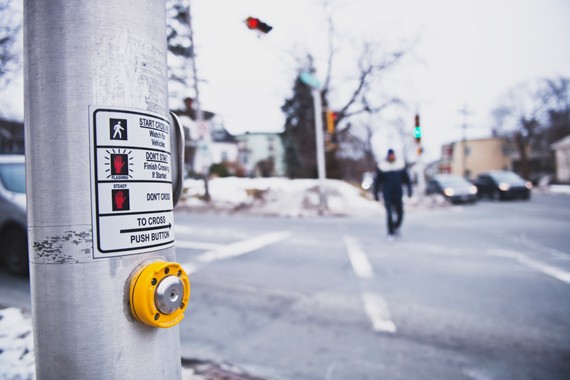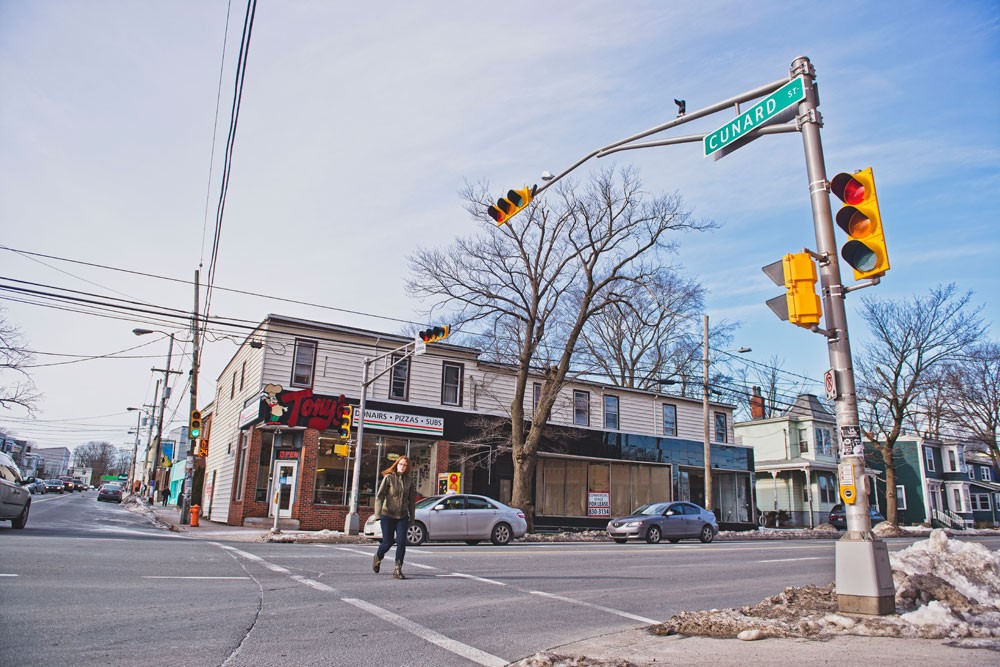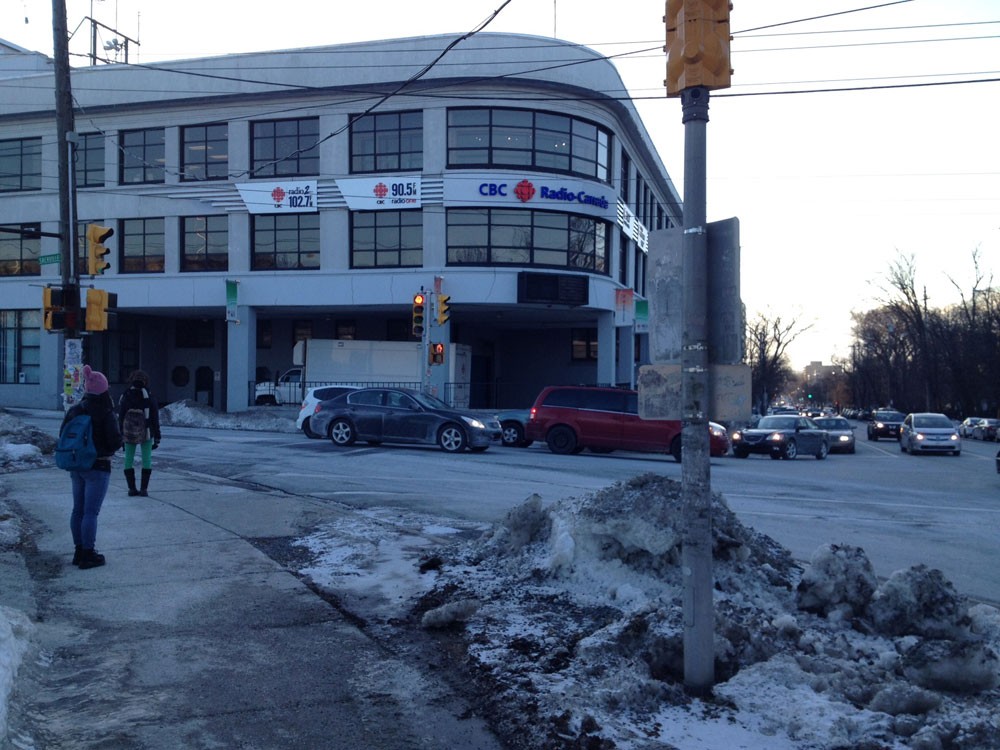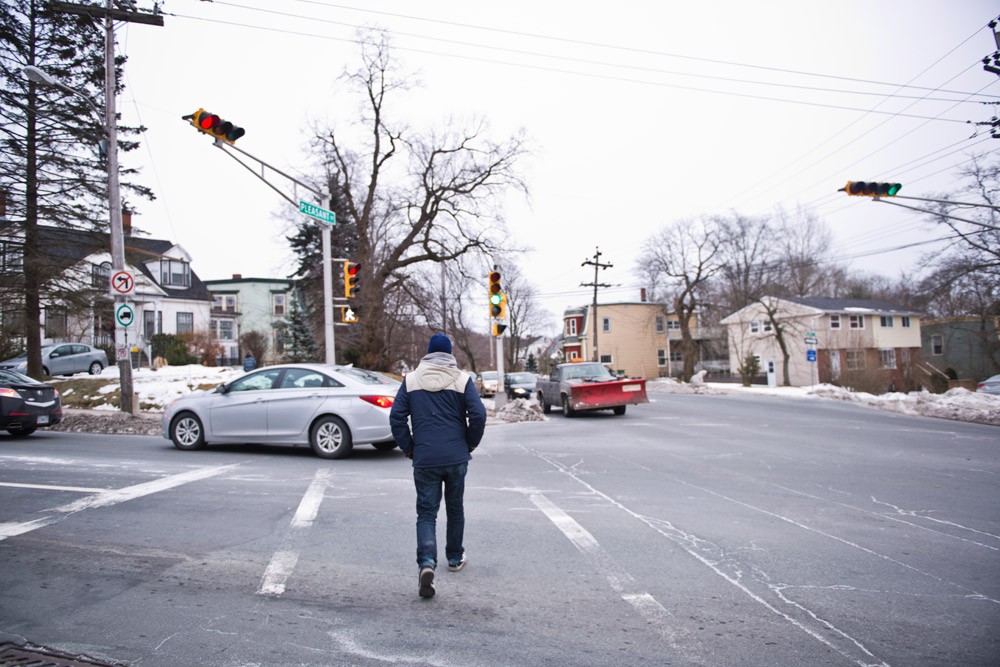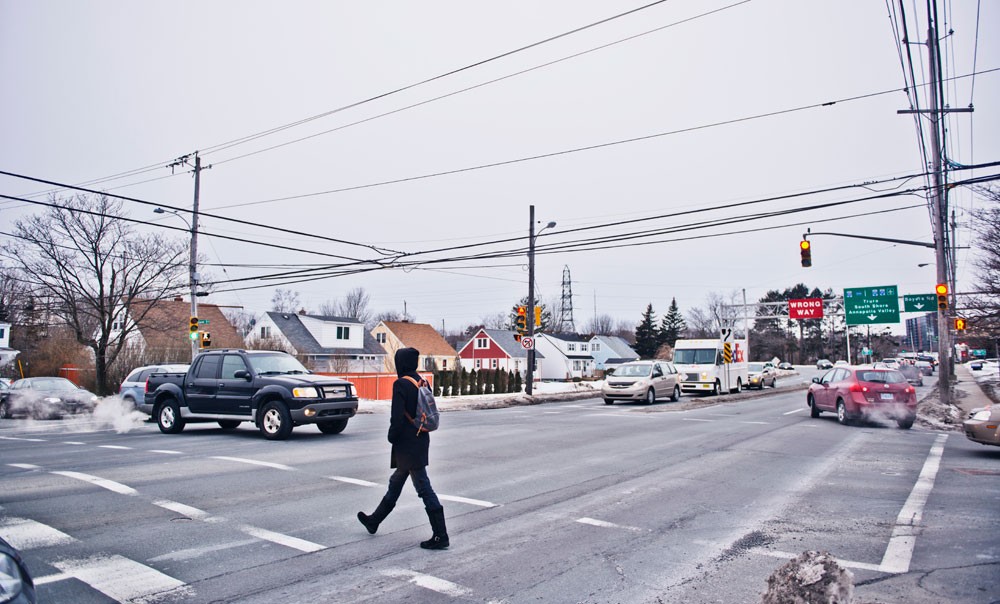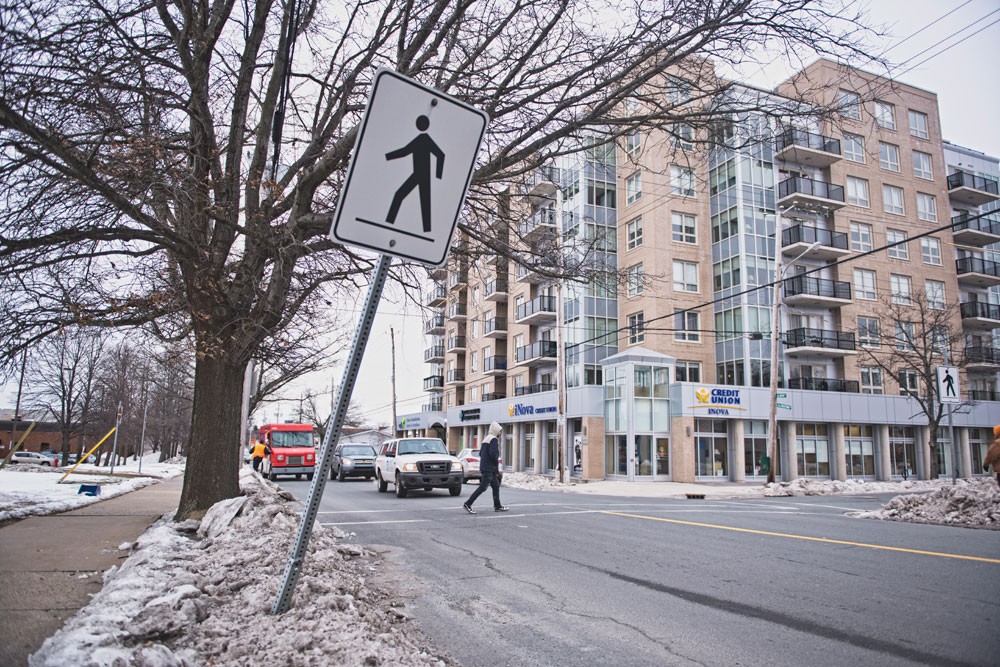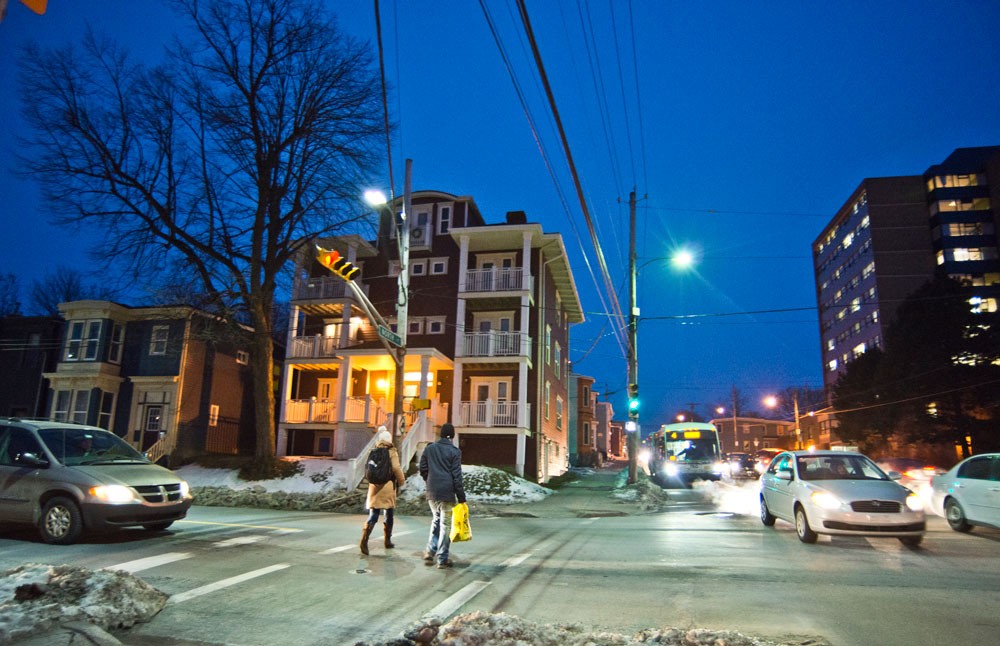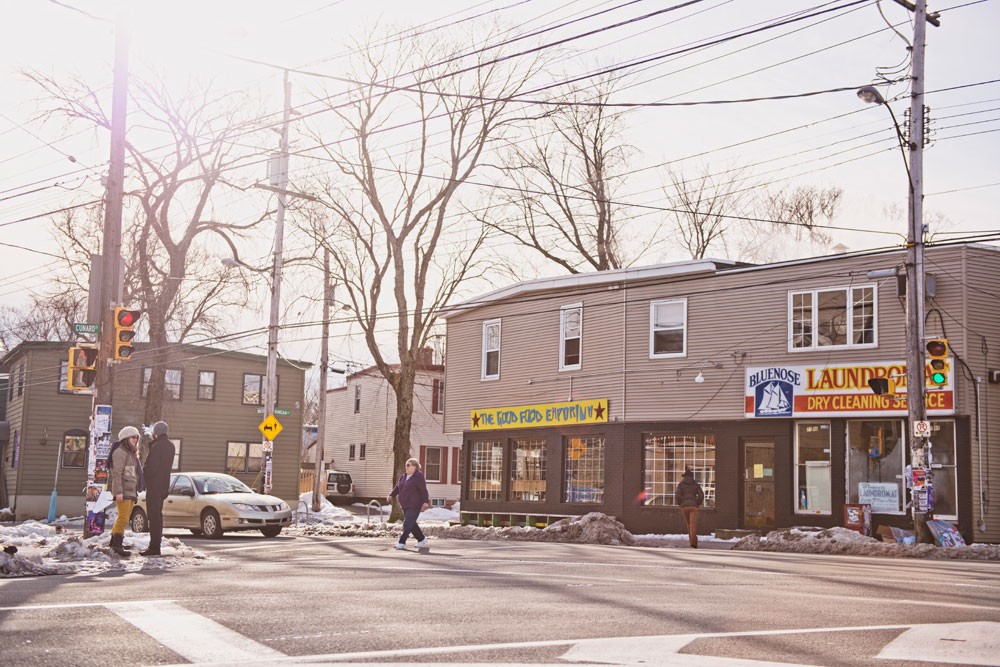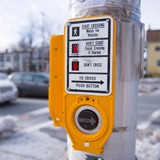Halifax, we have a problem: people walking across and near our streets are getting killed and maimed by cars. And yes, we all have dealt with erratic and irresponsible pedestrians, but the data overwhelmingly suggests that this is by and large a driver problem, not a pedestrian problem.
Consider: A recent police review detailed 74 pedestrian/vehicular incidents in 2013. Of those, 55 occurred in marked crosswalks. One was in an unmarked crosswalk. Eleven were in parking lots. Just seven were "other," but those aren't all classic jaywalking incidents. Police spokesperson Pierre Bourdages says the "other" category includes jaywalkers, but it also includes people hit while walking across a driveway or otherwise behaving responsibly—two women hit by a car walking on the sidewalk near Agricola and North Streets were classified in the "other" category," for instance.
Perhaps the most telling data point in the police review concerns weather conditions. Seventy-three of the 74 incidents occurred in rain or snow or fog. Think about it: When it was nice out, with good visibility, just one pedestrian was hit, but when conditions reduced visibility, dozens and dozens of pedestrians were hit. This strongly suggests that drivers are going too fast for conditions.
Still, pointing fingers at drivers in and of itself won't solve the problem. People should drive slower in crappy weather, but will they? Probably not, unless we get some real police enforcement. But there are engineering changes that can help make pedestrians more safe. With the help of readers, we've identified 12 problem spots for pedestrians, and make some suggestions about how to improve the design of those crosswalks to, hopefully, prevent future accidents.
Perhaps you have better ideas for these problem spots, or know of other intersections that could use some help. If so, leave your thoughts in the comments below.
Cunard and Robie Streets
WHAT'S WRONG
Here's another misaligned Cunard Street intersection, which was made that way purposefully by a city determined to turn narrow 19th-century streets into 21st-century expressways for cars. Cunard and Robie have been four-laned to the east and south of the intersection, but Cunard is two lanes to the west and Robie is three lanes to the north. We're told that as part of the Bayers Road widening project there are secret plans to four-lane Robie all the way from Cunard to Young Street, so obviously the desire here is speed for cars. For pedestrians, it's another story. Robie Street is a wide stretch of road to cross, with drivers turning south onto Robie going too fast for an intersection that seems designed to make them not see pedestrians. From one direction, Tony's Variety Store makes the crosswalk a blind spot. From the other, the crosswalk is at an unexpected place, too far into the turn. Pedestrians are struck here, often.
THE FIX
Dig up the asphalt on the south side of Cunard and add it to the North Common, return all the roadways to two lanes–one lane in each direction into the intersection–and disallow right-turns-on-red from Cunard going south onto Robie. That's probably not going to happen in our all-bow-before-the-car culture, so let's at the very least get some proper overhead flashing lights for pedestrians.
Mumford Road at the driveway into the shopping plaza near Walmart
WHAT'S WRONG
We'll leave this one to reader Andrea Patterson, who writes: "Getting off a bus at Mumford terminal and trying to cross on the crosswalk going west along Mumford Road is a problem, even when the walking man light is in your favour. There is a bus-only lane where buses make right- hand turns. The drivers only look left to make a right-hand turn on the red light to get back onto Mumford. Pedestrians often wait two or three lights so as to avoid getting run down by a bus.
THE FIX
Continues Patterson: "Buses have, prior to the walking man crossing signal, their own turn signal. A simple solution would be to disallow right turns on reds here for the buses. It is a major disembarkation point for pedestrians and very dangerous."
Pleasant Street at RR Bridge past refinery
WHAT'S WRONG
The speed limit on Pleasant Street is 60kph, but this is a wide open stretch of four-lane road that drivers typically travel in the 90-100kph range. Speed is particularly a problem for northbound vehicles, which travel a broad clockwise curve before crossing under the railroad bridge and suddenly coming upon the crosswalk. Drivers can't see pedestrians, and vice versa, until it is too late for a fast-moving car to stop. There's also a fundamental design error at this crosswalk: the bus stops, especially on the south-bound side, are placed before the crosswalk, and so departing bus passengers crossing the street walk in front of the bus, where they can't be seen by on-coming vehicles. This seems too have been a contributing factor in an accident that killed 19-year-old pedestrian Peter Archibald in the crosswalk in 2012.
THE FIX
Some enforcement of the speed limit would be good. Lacking that, flashing lights placed on the railroad bridge to warn of the impending crosswalk, along with a fixed sign telling drivers of both the speed limit and their actual speed (like the one before the toll plaza on the MacKay Bridge), would likely slow drivers down. As for the bus stops, simply moving the southbound bus stop a few metres south, to the other side of the crosswalk, would make a big difference. Also, when we visited the site a full week after a snowstorm, the sidewalk around the push button to activate the crossing light was iced up. To walk across the ice to push the button requires great care, meaning time, and so the light changes before one can walk all the way across the street. The city should make sure the ice is removed.
Bell Road/ Sackville and South Park Streets
WHAT'S WRONG
Pedestrians walking from the east side of Bell Road south across to South Park Street, by the CBC Radio building, face two problems. First, drivers turning from Sackville Street right onto Bell Road get to turn right-on-red for a long time, giving drivers a sense of entitlement so they don't actually stop at all, even after the walking man appears. For pedestrians, there's a second danger point at the other side of the street, as the crosswalk is at some remove from the corner. This gives drivers turning right from South Park Street onto Sackville Street the false impression that there are no pedestrians to worry about, and the short space between the corner and the crosswalk becomes a tangled mess. But don't take our word for it—you can see repeat performances of horrific driving behaviour at this intersection in this video taken by reader John van Gurp, starting at the 1:18 mark:
THE FIX
We realize this is probably a treasonous statement, but the city should do away with right-turn-on-red at this intersection.
Five Corners (Pleasant, Portland and Albert Streets)
WHAT'S WRONG
There's an optical illusion for drivers travelling east on Portland Street, away from downtown Dartmouth. Those who intend to keep going "straight" on Portland Street, toward the Penhorn area, have to get in a left turn lane, while those turning right, onto Pleasant Street, toward Woodside, travel in what appears to be a mostly "straight" direction, albeit it one with right-turn-on-red privileges. There's also a slight hill that shifts the drivers' sight lines into the intersection to the left and away from the sidewalk on the right. Combined, these aspects of the intersection create a problem for people walking east on the south side of Portland Street, crossing Pleasant Street: Drivers tend not to see them, and tend not to stop for them.
THE FIX
There should be a street level light, just before the intersection, that flashes in sync with the walking man light the pedestrian receives.
Bayers Road at Romans Avenue
WHAT'S WRONG
People hoping to walk across Bayers Road from south to north must wait a long time for the light to change–the don't-walk sign is up for one minute and 25 seconds, by far the longest light we know of. Obviously people shouldn't cross against the light, but humans being human, many pedestrians give up hope the light will ever change, and they dash out during a gap in traffic. This bad pedestrian behaviour is matched by bad driver behaviour: the speed limit on the westbound lanes of the BiHi is 60kph, but cars are regularly travelling 90kph or more, coming into the blind curve onto Bayers Road, just before the crosswalk at Romans Avenue.
THE FIX
The long period for the red light for pedestrians demonstrates traffic engineers' view of Bayers Road as an expressway for cars. Remember, the engineers' plan is to widen the road to six lanes at Romans Avenue–decreasing pedestrian safety even more. But instead of speeding traffic up, we need to slow it down. The light cycle should be reduced to at most a minute, probably less. And some warning lights should be placed on the BiHi off-ramp, alerting drivers to both their speed and the crosswalk around the bend.
Almon and Gladstone Streets
WHAT'S WRONG
Perhaps because it's a T intersection and not a four-way intersection, drivers seem disinclined to treat this crosswalk with respect. There used to be push button-activated flashing lights above the crosswalk, but for some reason they were taken down when the building on the corner was being constructed. And who's a tenant in the new building? The Canadian National Institute for the Blind. Also, the contractors hired by the city have not yet this winter cleared the crosswalk on the post office side.
THE FIX
Hello? Blind people! Crosswalk! Ice! Can we get someone to remove the icewall along the curb? And let's return the push button-activated flashing lights, pronto.
Titus Street at Evans Avenue
WHAT'S WRONG
Fairview is a first-ring suburb never designed to handle the loads of traffic now travelling through to Clayton Park and the giant apartment complexes in the Washmill Lake Drive area. The Dutch Village Road-Titus Street corridor is a mishmash of indistinct roadways with no clear curbs, the roadway blurring into parking lots and lots and lots of pedestrians. We could've looked at any of the pedestrian crossings–those at Rufus Street and Rosedale and Central Avenues are also bad–but we chose the one at Evans because a reader told us she "saw a woman and her daughter cross there a few years back and a older gentleman [driver] didn't see them as the bus blocked his view and hit them. The woman was thrown about 50 feet and her daughter was barely missed. The mother died on the scene."
THE FIX
The entire corridor needs some major traffic calming features added, including proper curbs, street trees, rumble strips and pedestrian bulbs.
Back in 2009, this particular crosswalk was one of five in HRM picked for the "Side Mounted Flashing Beacons for RA-5 Crosswalks Trial Installations Report," an oddball study with very questionable methodology (see the report here) testing the effectiveness of "lower-level side-mounted flashing lights," basically the kind of driver-level lights we say should be installed at Five Corners (see page 6). The study's results: at this crosswalk, such lights actually decreased pedestrian safety.
One finding gives us pause: "Lone drivers, i.e. drivers of vehicles not part of platoons, were more likely not to stop than the lead drivers of platoons." In other words, if drivers have another driver behind them to witness them driving like assholes near crosswalks, then they are less likely to drive like assholes near crosswalks. But if it's only the one driver and the one pedestrian, drivers asshole away.
If we can't get traffic calming or driver-level flashing lights at this crosswalk, at the very least the bus stop should be moved north, next to the unnamed park with the giant rock, so stopped buses don't block drivers' view of pedestrians.
Cogswell Avenue/ Rainnie Drive/North Park, Trollope and Ahern Streets
WHAT'S WRONG
There's so much wrong with this intersection, but here's the biggest problem: This is the major pedestrian route for thousands of people walking from the north end, around Citadel Hill to Spring Garden Road, the hospital or universities. When these walkers get to this intersection, they have to cross Cogswell Avenue, but there's not enough time to also cross Rainnie Street, so they have to wait once more for the light to change. Then, the pedestrians have to deal with drivers turning from North Park left onto Rainnie, who are pulling the same "let's try to beat the oncoming cars after we lose our advance green" stunt that drivers pull at Gottingen and North (see adjacent), also while pedestrians already have the walking man.
THE FIX
The city very much wants to build a roundabout here, and is undertaking a PR offensive to defuse citizen skepticism of roundabouts. This is good. Trust us on this: A properly designed roundabout will be much safer for pedestrians than the current mess they face.
In the meanwhile, like on Gottingen Street, we need a lag time before the pedestrians' walking man light comes on. But the combination of the crossing lights for Cogswell and Rainnie is already timed far too shortly–why should a pedestrian have to wait two light cycles to get through the intersection? So, the timing of all the lights needs to be adjusted in pedestrians' favour.
Gottingen and North Streets
WHAT'S WRONG
Pedestrians walking on the south side of North Street, crossing Gottingen Street towards the Macdonald Bridge, are put at danger each light cycle. At issue are drivers coming off the bridge, turning left onto Gottingen. They have an advance green light to make it through the intersection, but then the light turns to a regular green at the same time as the eastbound North Street traffic (toward the bridge) gets a green light, and at the same time the walking man light comes on for eastbound pedestrians. When these lights change, the drivers attempting to turn left onto Gottingen Street are out in the intersection. They could wait until the oncoming cars pass, but no. Instead, they see the oncoming cars, and accelerate to get through before being hit by the cars. But pedestrians, having already reasonably responded to the cue of the walking man light, are two or three steps off the curb. Cars swerve, pedestrians jump, horns blare, middle fingers extend. Seriously: stand near the intersection during rush hour and watch the same situation unfold over and over again, all day long. It's a miracle no one has been killed there.
THE FIX
As much as we dislike rewarding fundamentally unsafe driving, we see no realistic chance that these drivers will ever change their behaviour. They've got jobs to go to in their downtown office towers. People to see, probably wearing suits. Coffee to purchase. They're in cars, for dog's sake. Unlike those pesky pedestrians who are just walking, maybe to the bus stop, the losers. Who's more important here? The drivers win. So, the walking man light should be delayed two or three seconds after the traffic light turns green, so the left-turning drivers can reign supreme and make it through the intersection. It's not worth a dead pedestrian to prove a point.
Cunard and Windsor Streets
WHAT'S WRONG
Cunard Street doesn't continue in a straight line, but rather jogs right along Windsor Street, and then left again to resume its course, leaving uninitiated drivers perplexed and veteran drivers frightened. We've seen drivers stop mid-intersection, thinking the Windsor light controls the left back onto Cunard–it does, but only for those who were previously on Windsor and not those who were previously on Cunard...got that? And because Windsor is too narrow to be a true four-lane road, drivers travelling straight on Windsor skirt dangerously around those turning left onto Cunard, and by this time, everyone is freaked out. Throw in a poor pedestrian simply trying to cross the street, and it's mayhem.
THE FIX
We're told that some years ago the city turned down an opportunity to buy the Needs property so it could realign the intersection. Too bad. Failing that, what's needed is overhead flashing lights for pedestrians.
Portland Street, Alderney Drive and Prince Albert Road
WHAT'S WRONG
People walking straight west on Portland Street, on the south side of the street, towards downtown, face a combination of problems. First, this winter, or at least when we visited a week after a snowstorm, the sidewalk in front of 176 Portland disappears under a pile of uncleared snow and ice. To get to the corner, pedestrians have to walk up the DFO building parking lot, then back down a different sidewalk leading from the building. This places the pedestrian at a slight remove from the actual crosswalk, and from that point the walking man sign across the street is blocked by a pole in the median of Alderney.
Additionally, people driving north on Alderney Drive often get a red light/green arrow signal that allows them to turn right onto Portland without stopping. While there's no conflict with pedestrians in that part of the light cycle, the arrangement conditions drivers to approach the intersection too quickly, even when they don't have the green arrow, like when pedestrians have the walking man signal. There's also a brick wall parallel to the street that blocks drivers' view of pedestrians waiting on the corner.
THE FIX
The city should make sure that snow and ice is removed from the sidewalk in front of the DFO building, and consider moving the pole in the median a few metres to the south, so pedestrians can clearly see the walking man sign across the street. More substantially, the red light/green arrow arrangement should be ended: Require drivers to come to a complete stop before turning right, just like they have to do at every other intersection in town. This will break drivers' habit of approaching the intersection too quickly. Finally, if the brick wall can't be removed, at least place a flashing light on its southern end, warning drivers that they are approaching a pedestrian crossing.
Pushing our buttons
While we're discussing pedestrian safety, let's not forget the most dangerous public policies affecting pedestrians. We first wrote about this five years ago (see "Crossing the law," March 12, 2009), when there was a two-fold change in long-held policies. First, new crossing lights are programmed so that the pedestrian don't-walk/walk signal doesn't come on automatically but only changes if first activated by the pedestrian pushing a button. Second, the motor vehicle code was changed so that pedestrians don't automatically get the right-of-way–they must also have the walking man light. Except for when the walking man light is activated, the two changes take the right-of-way away from pedestrians and give it to vehicular traffic instead. We argued then, and now, these changes budge drivers' collective gestalt towards a sense of entitlement vis-a-vis pedestrian that results in drivers being less careful. Our fears seem to have been realized.

